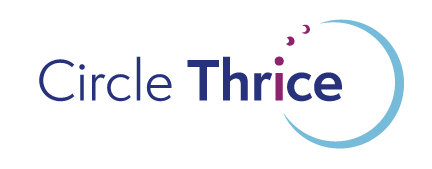I hunted down this old post today because it said something I needed to hear. Interesting how we can need reminders of even the things we already believe?
There have been some significant changes in the way magicians view magic in recent decades. Chaos magic in particular has moved away from a spirit-driven model, or a will-driven one, to a probability-driven view of magic. That is, magic’s effects are on the probability field around various results. This view accounts for a lot of the actual limitations we see with magic (the core example is why your spell didn’t win you the lottery).
The chief complaint about this model seems to be that labeling all magic as ‘probability shift’ makes the results of magic very small. That is limits magicians to only those changes that already have good odds. If you can’t affect major changes, then what’s the point?
I think there are two answers to this objection:
First, who gets to say what the odds really are? The lottery, for all that it’s crafted to be random, has an extremely low level of actual chaos. There’s just not a lot of flexibility in the system that you can take advantage of magically. Everything about the drawing is highly controlled — sure, the actual drawing is random — but the lottery commission makes sure that it’s a pure, laboratory-controlled form of randomness.
Nassim Taleb argues that this kind of randomness (of casinos and lab studies and Monte Carlo simulations) rarely occurs “in the wild.” And that our ability to predict odds in real world scenarios is hindered by this blind belief in the laboratory math (for more, see the Ludic Fallacy).
In truth, the odds of situations in the real world following these perfect rules are very low. Very small changes can have huge results and very large changes can have zero results. Or as Taleb puts it, we live in Extremistan rather than Mediocristan — normal probability distributions just don’t apply. I will be digging deeper into this, but the most important immediate point is that if you know where to apply the pressure, you can affect huge change with tiny effort. Magic smart, rather than hard, you know?
Second, even if you can only make small changes, multiple small changes is how major goals are typically met. Everyone forgets that in order to sell millions of copies of the Harry Potter books and make a billion dollars, JK Rowling had to first sit down — every day — and write the darned things. One word at a time. In terms of lifestyle magic (building the life you want for yourself) ongoing incremental change is the best way to make sure the results actually meet your expectations and don’t destroy you in the process. This is agile development and it’s a very useful paradigm for this kind of change.
PMPractical Magic is about probability stuff. That’s the place where that kind of planning and organization works well. In fact, I find the probability model of magic extremely useful. However, that doesn’t mean that’s the only definition of magic that I ascribe to.
See probability magic is all in front of the curtain. It’s ON STAGE, so to speak. The laws of cause and effect still apply (though in a more wobbly around the edges form than we usually think of it). Probability still matters (even if we tend to measure it wrong). Time (even if it’s stretchy) marches on.
There’s another class of magic that’s behind the curtain. It takes place back stage, where the clockwork is. Temporal magic takes place here. As does major healing. Spirit flight, shamanism, soul retrieval, night battles. This is the place you go through to interact with the ancestors and spirits. There’s no such thing as probability here, or cause and effect. The normal rules don’t apply. Maybe there aren’t any rules or maybe just the ones you bring with you.
Work done behind the curtain tends to get smoothed over on stage. No matter what’s going on backstage, in a well-run show, the audience never knows that one of the props just caught fire, the lead dancer twisted her knee, and director is still changing lines for the second act. Of course, our show isn’t perfectly run. Paranormal stuff showing up in our regular world (alien sightings, ghosts, monsters) are examples of stuff backstage interfering with the show and disturbing the actors. If there’s a boundary between magic and psy, it might be right there at the curtain.
Working backstage, you can affect some pretty amazing change, and never cause a ripple on the visible surface. Temporal magic might be the best example here. But this kind of work is much harder to describe. I think that’s why so much of it gets bound up in religion and spirituality. First, because backstage is weird and can be dangerous and one common way to visit is with a guide. Second, because the work you do on this side of the curtain with those beings (offerings to gods and spirits, ancestor altars, etc.) is quantifiable, even if the backstage results aren’t. Finally, getting behind the curtain typically requires altered states of consciousness — many of which are impolite, illegal, or uncomfortable to discuss.
Sustainable sorcery tends to delve more deeply into this kind of work. Not because there’s no practical aspects to it (one thing you’re going to see about me it that I’m inherently hyper-practical), but because our current onstage world is SO unsustainable, that in order to escape those patterns and that kind of thinking, you have to go very far afield. Trying to survive in the world we have while keeping ties to the liminal, the Earth, the Universe — the things that deeply sustain us — can break your brain (in a bad way).
To me, these ideas aren’t contradictory but form a continuum that informs my way of practicing and thinking about magic.

